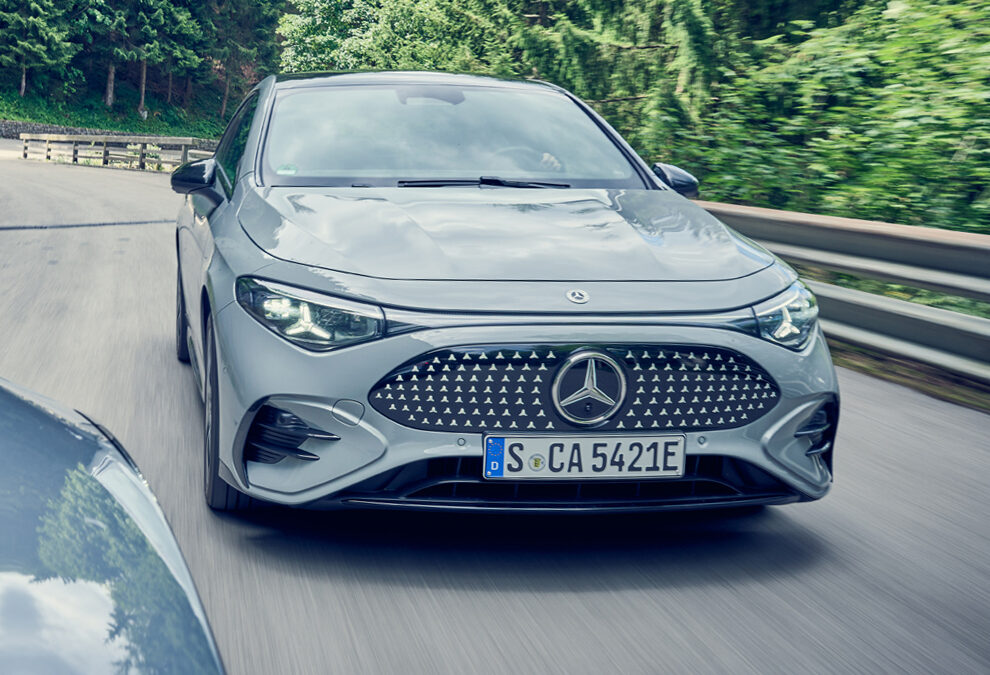Mercedes CLA | Tesla Model 3
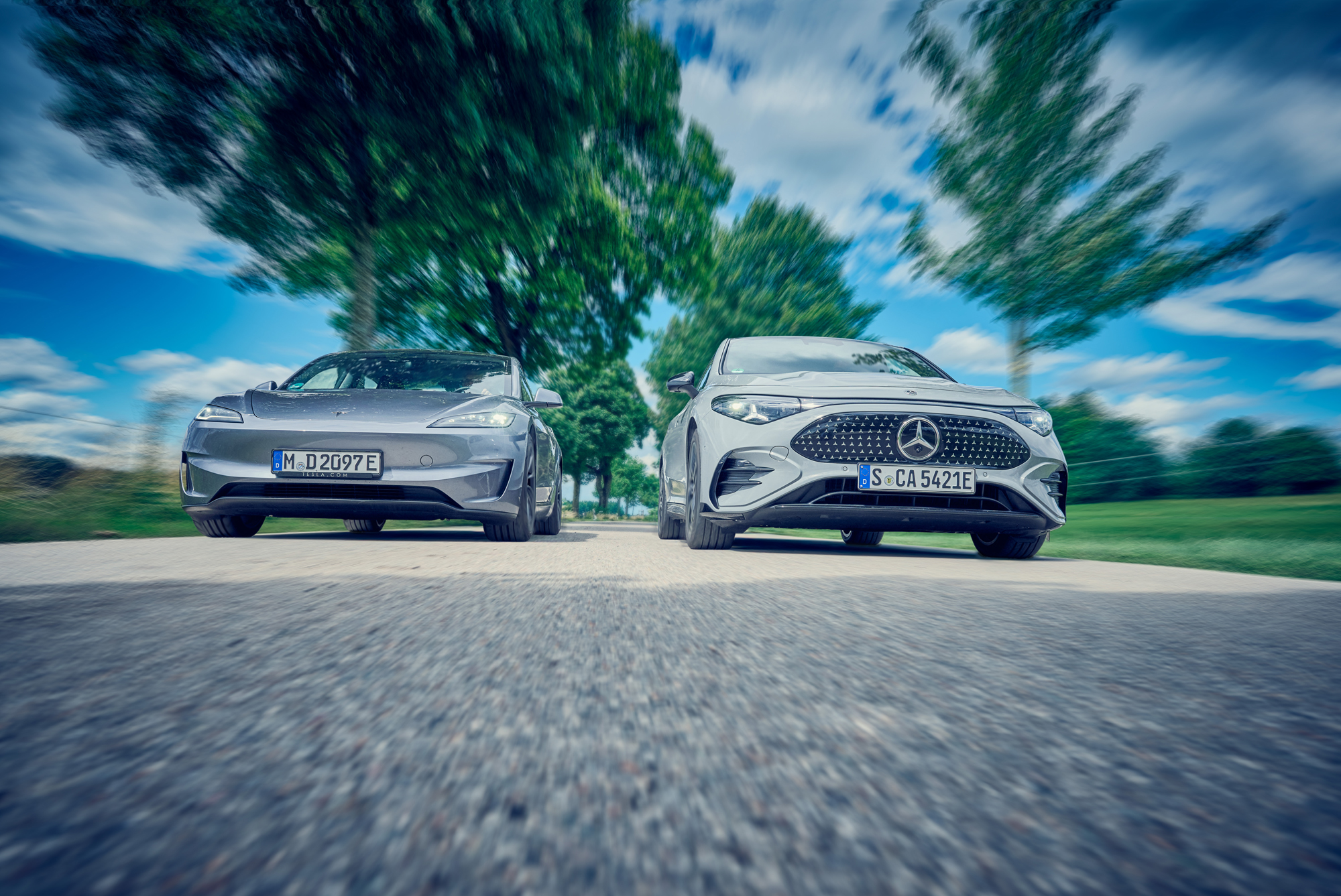
TRADITION MEETS DISRUPTION
The car that sums up everything Mercedes has learned about EVs takes on the mighty Tesla Model 3. The result may not be what you’re hoping to hear…
Perplexed by the patchy performance of its first wave of electric cars, the EQ-badged models, Mercedes is about to signal a reboot by introducing a brand new design language bringing back the more upright radiator contour pioneed by the Daimler Simplex back in 1902. Unfortunately, when the board signed off the bold look of the future, the new CLA was already past its design freeze, so it gets a slightly frumpy ‘catfish’ front end rather than the eye-catching new grille that makes its debut on the 2026 electric GLC.
That awkward timing for the CLA is perhaps an ominous omen as it takes on the world’s second best selling electric car, the Tesla Model 3 (beaten only by Tesla’s own Model Y) in our exclusive first comparison test.
For over 10 years, Tesla was the undisputed number one EV manufacturer across the globe. Not so any more. While the Europeans are still busy catching up, the Chinese competition is in full swing, challenging the US-based company in all departments from value for money to user experience. Even before Tesla chief Elon Musk started his ill-fated foray into politics, it was clear that Tesla needed a re-start, the sooner the better.
But apparently that’s easier said than done. The Model S and Y are both getting long in the tooth, the Cybertruck is an answer to a question not enough customers ask, the mysterious Roadster has yet to emerge from fantasy land, and the Robotaxi still needs a white stick when entering uncharted terrain. Which puts the company’s fate on the softly rounded shoulders of the recently facelifted Model Y (codenamed Juniper) and the car featured here, the updated Model 3 (Highland).
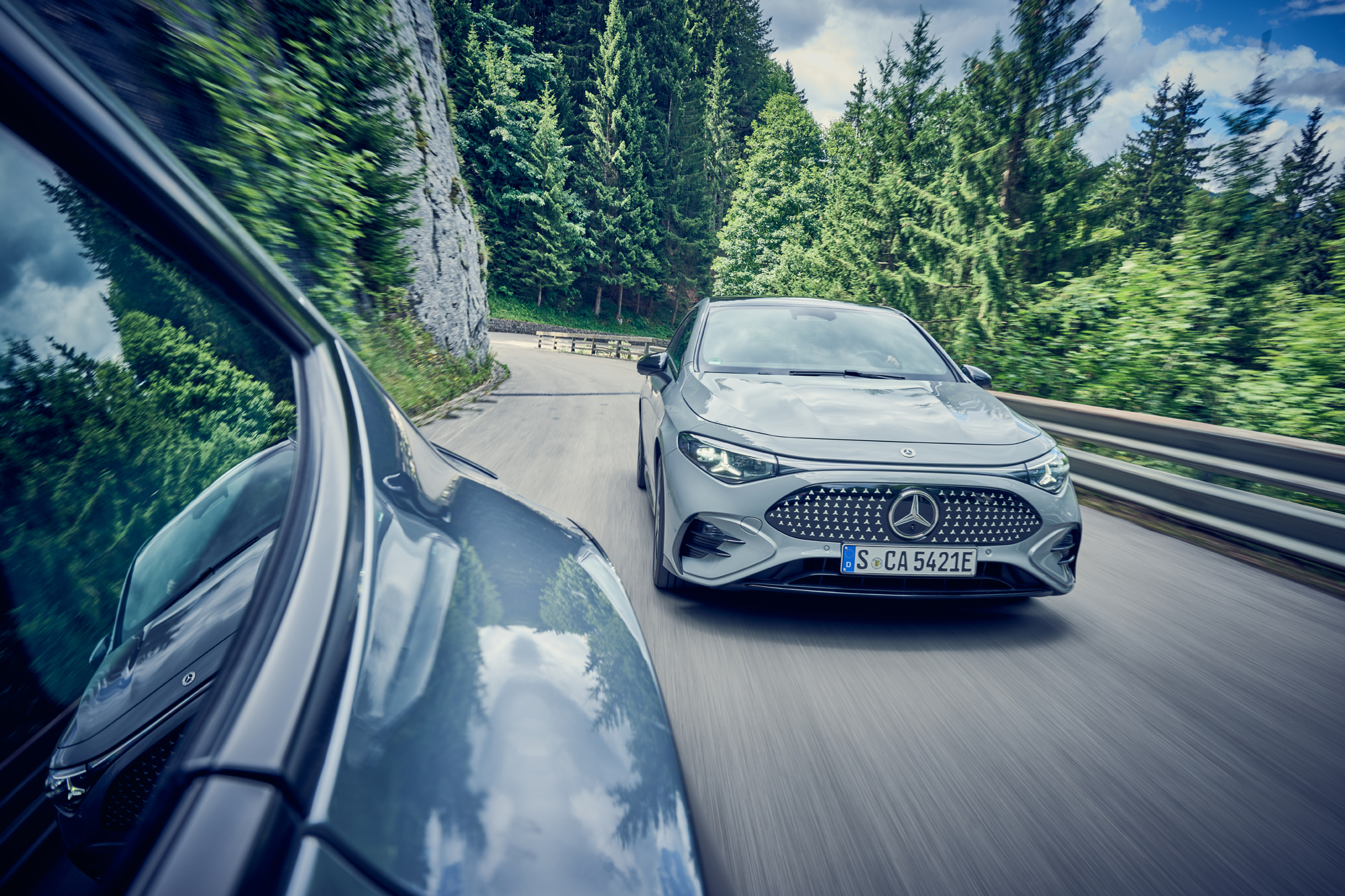
The two Teslas still top the European EV sales charts, but that lead is melting away fast. Can the all-new Mercedes CLA dethrone the American game-changer launched back in 2016?
Not too long ago, Mercedes was hoping to pursue an ‘electric only’, but the market didn’t play ball, and now the Stuttgart-based brand is stuck with a costly platform split it will have to carry deep into the next decade. The engineering solution is a versatile platform, or ‘convergence matrix’, dubbed MMA, short for Mercedes Modular Architecture. It underpins not only this CLA but also its Shooting Brake sibling as well as the second-generation GLB and GLA, which are both due to emerge next year.
Designed to accommodate a 1.5-litre four-cylinder petrol engine or a 58/85kWh battery pack, the CLA 2.0 attempts to kill two birds with one stone, which inevitably means some packaging compromises compared to an electric-only platform, which doesn’t need to worry about engines and petrol tanks.

In the CLA, rear-seat passengers aren’t generously provided with legroom and headroom. Four adults will not want to travel in this car over longer distances, and the 405-litre luggage compartment is barely adequate for a vehicle which measures 4723mm in length, even though the frunk boosts the cargo space by 101 litres.
The Model 3 hasn’t had any modifications to its sheet metal for years, although the nose and tail have been tweaked, with new matrix LED headlights, and there are new arch-filling aerodynamic wheels and a classier interior than owners of earlier Model 3s will be used to. At 4720mm from bumper to bumper, the Tesla virtually mirrors the footprint of the Benz, but its rear seats are not at all cramped, and the combined cargo space is cavernous.
Up front, both cars offer plenty of room for broad and tall occupants. Due to the angle of the windscreen and the low, coupe-like roofline, getting in and out of the CLA requires more careful planning or a few extra hours in the gym. The visibility out of both cars is generally good, although neither has a large rear window.
Distraction is the price you pay for digital diversity
Inside, Benz and Tesla are worlds apart. The Model 3 interior is very clean and tidy, almost barren, stylish in a timeless way, classy to the eye and the touch, professionally put together and easy to live with except for those polarising minimalist ergonomics. It’s quite a contrast to the Mercedes with its focus on luxury and a huge, fancy 3D info screen, which is AI-animated and deep-dive multi-functional. The flashy dashboard is framed by two large chrome-rimmed round ventilation jets which are supported by a pair of smaller rectangular Wurlitzer-style lower air outlets.
While Tesla offers six different colours and two vegan-friendly fake-leather options, period, CLA customers can commission the MB Manufaktur division to match their desired bespoke paint job to one of seven different upholsteries. Such overt opulence has its price. In the case of our German test car, the grand total came to a whopping €78,569. Similar money buys an EQE 350 4Matic with a few extras, a BMW i5 40 xDrive Touring or an Audi A6 Avant e-Tron. The tested Model 3 Performance would set you back £59,900 complete with fancy 20-inch wheels, heated and ventilated seats, rear touchscreen, premium audio system, tinted glass roof, metallic paint and basic Autopilot capability.
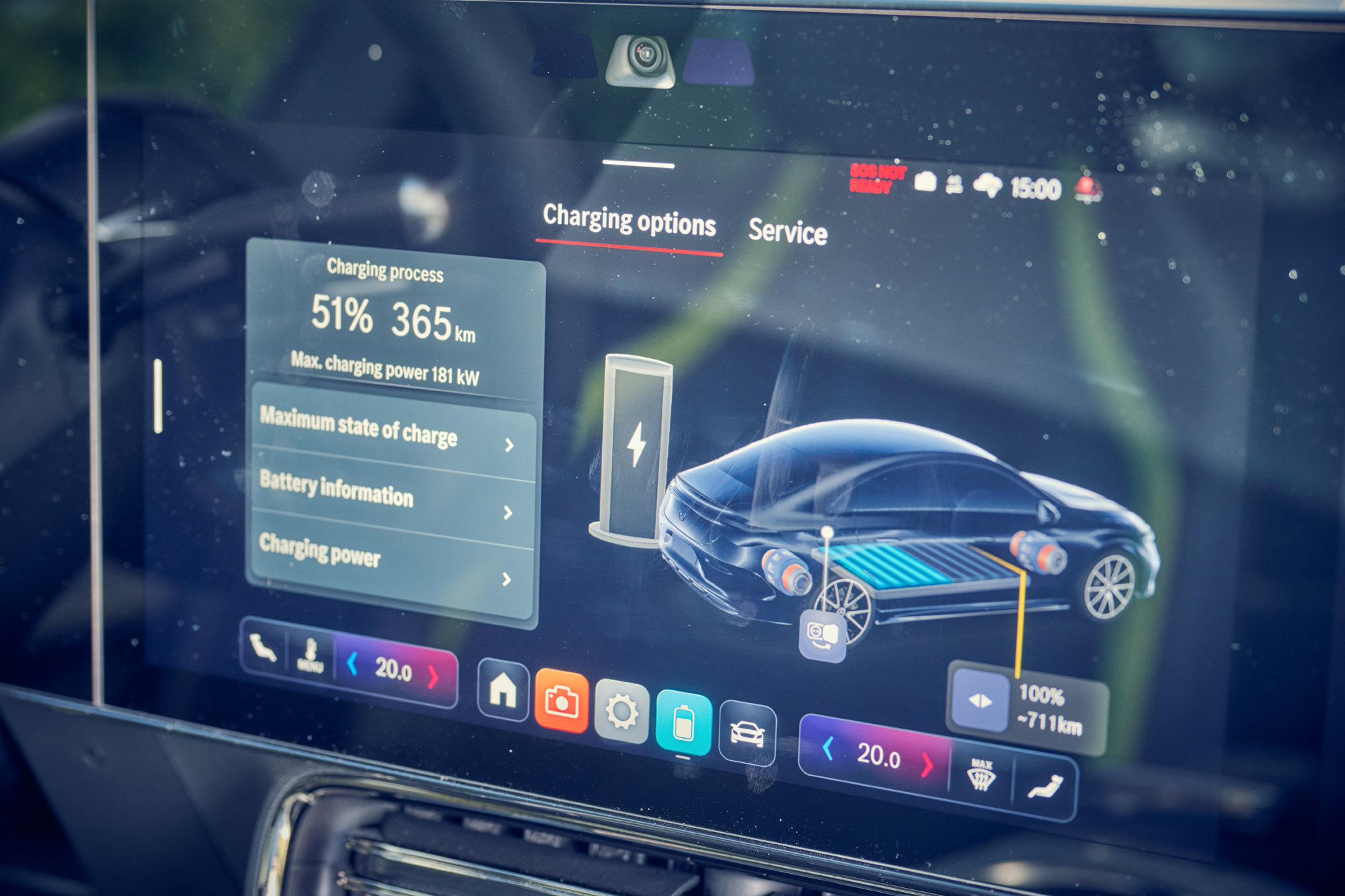
Although Mercedes UK has not yet fixed the price of the 2026 CLA350, we’ll be very surprised if it costs less than the Tesla.
Enough theory. Let’s check out how these two EVs compare on the road. Both employ two motors, each driving a pair of wheels, but only the CLA is equipped with a two-speed transmission. First gear is short-legged at 11:1, which helps when the stopwatch comes out and in busy commuter traffic. Second changes up to a taller ratio of 5:1, which cuts revs above 50mph and increases the efficiency at motorway speeds. Shifts in either direction are quiet and seamless, but to light up the throttle response requires a quick flick of the drive mode switch from Comfort to Sport. To minimise drag torque losses, the CLA 350 4Matic operates in rear-wheel-drive most of the time. When extra traction is needed, the front axle joins in smoothly, progressively and imperceptibly.
The Highland version of Model 3 is more than a routine update. It fixes flaws like the previously wooden spring and damper setting, the below-average interior quality and the rather basic standard equipment. Unfortunately it also includes a few features that not even the Tesla fan communcity universally admires. How to change between Drive and Reverse, for instance. This is either done by hitting the appropriate button above your head or by swiping up and down a narrow path on the side of the touchscreen. Or try using the wipers or the indicators, which are no longer operated by column-mounted stalks. Instead, you must fiddle with a couple of tiny touch buttons and a flimsy toggle switch on the steering wheel.
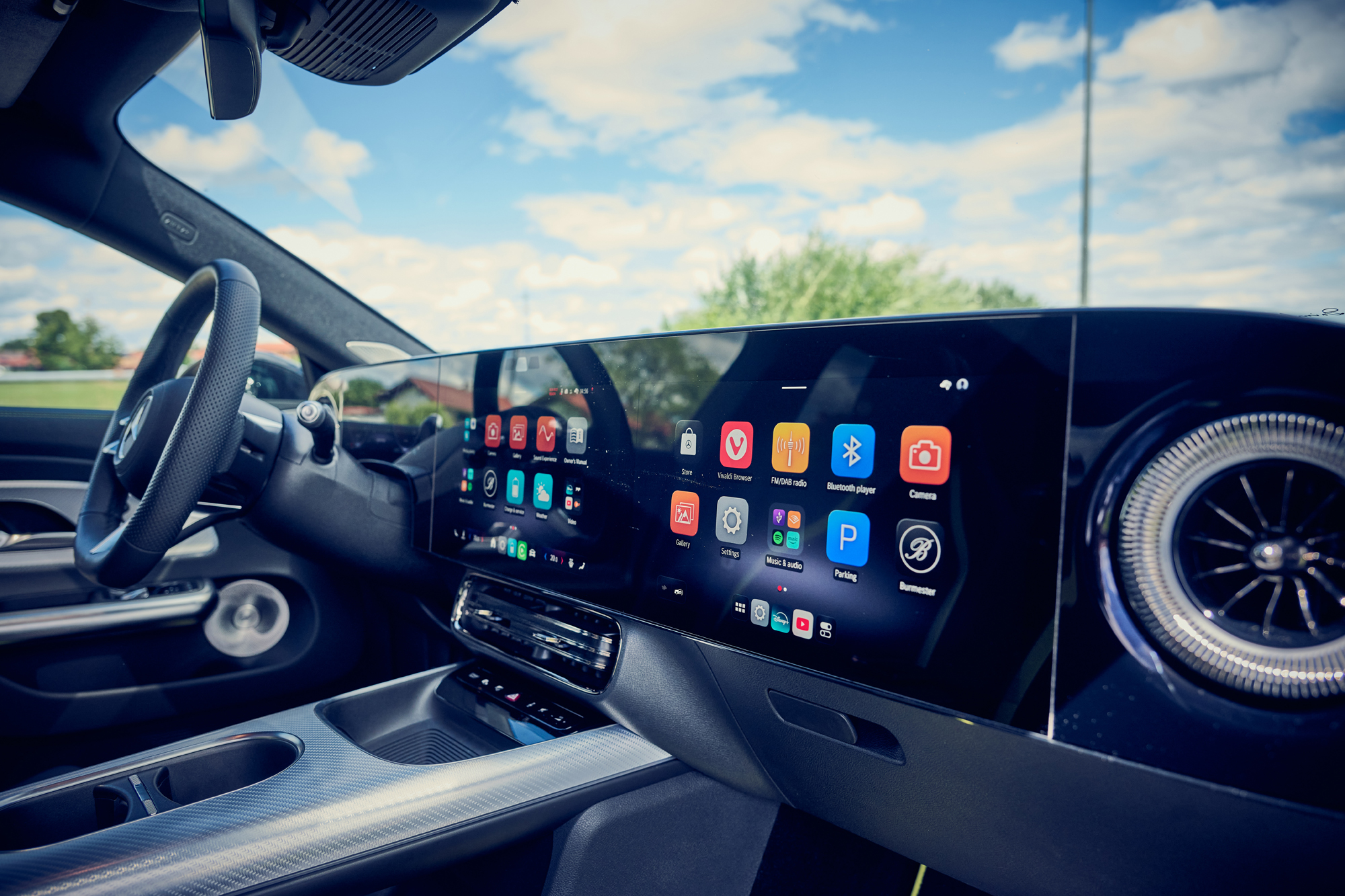
This haphazard layout sidetracks the mind during quick lane changes and when winding on or unwinding lock. Other offenders: door mirror adjustment (three touchscreen hits), lane keeping assist (four hits), seat heating (four hits), driving mode select (three hits) and temperature control (three hits). Arrghhh!
The CLA is not exactly an epitome of intuition either. Here, too, distraction is the price you pay for digital diversity. And diverse it is, the full-width digital canvas complemented by a complex head-up display, a feature Tesla does not even offer. The Mercedes multiplex uses three different screens: the main instrument panel featuring a large power reserve gauge instead of the combustion car’s revcounter, the main centre monitor and the optional passenger screen. All displays can be personalised from total information overflow to Do Not Disturb restrained. The in-dash show is broadcast in full colour with real-time video inserts, AI gambits and a small game library.
Brake dive, a rarity these days, resurfaces in the Tesla, which pops its tail like a duck in the course of an emergency stop
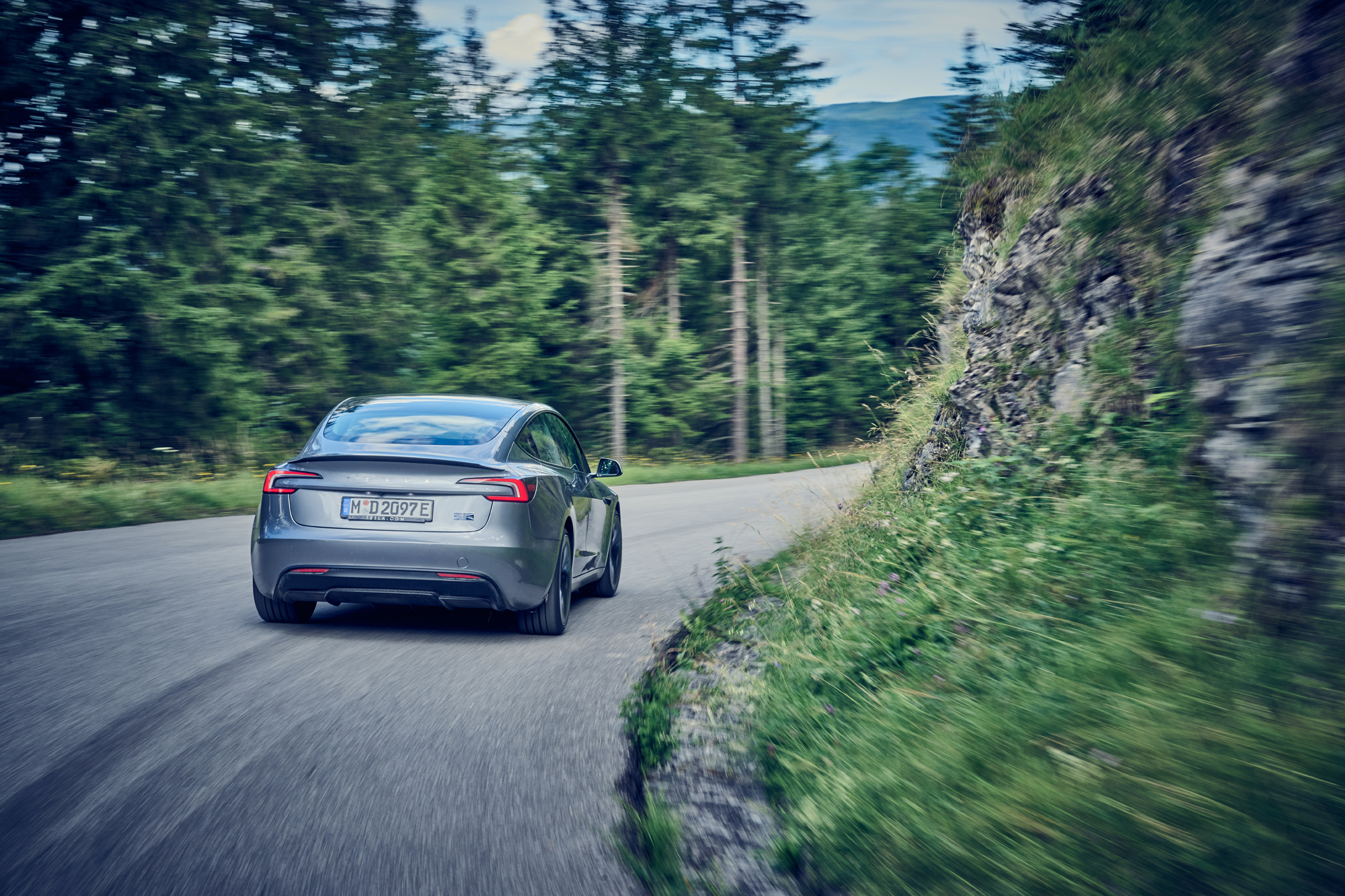
In contrast, Tesla´s stylistic idiom is mainly grey on grey with a few blue, red and green accents livening up the comparatively sombre presentation. Deactivating the speed limit warning and steering assist is no more than two clicks away in both cars.
In two areas, the Mercedes excels. The ride comfort is simply superb, and the car is eerily quiet even at speed. While the Model 3 decides for you how best to regenerate energy on the fly, the Mercedes invites the driver to select from four different settings. Auto and Drive are almost always spot-on, D- feels like a one-pedal typhoon headwind, D+ releases uninhibited free-wheeling.
The brakes, a bone of contention in early EQE and EQS models, are notably more progressive and responsive now, but in hard use the required pedal pressure increases, the feedback becomes mushy and the deceleration first loses its bite, then its stamina.
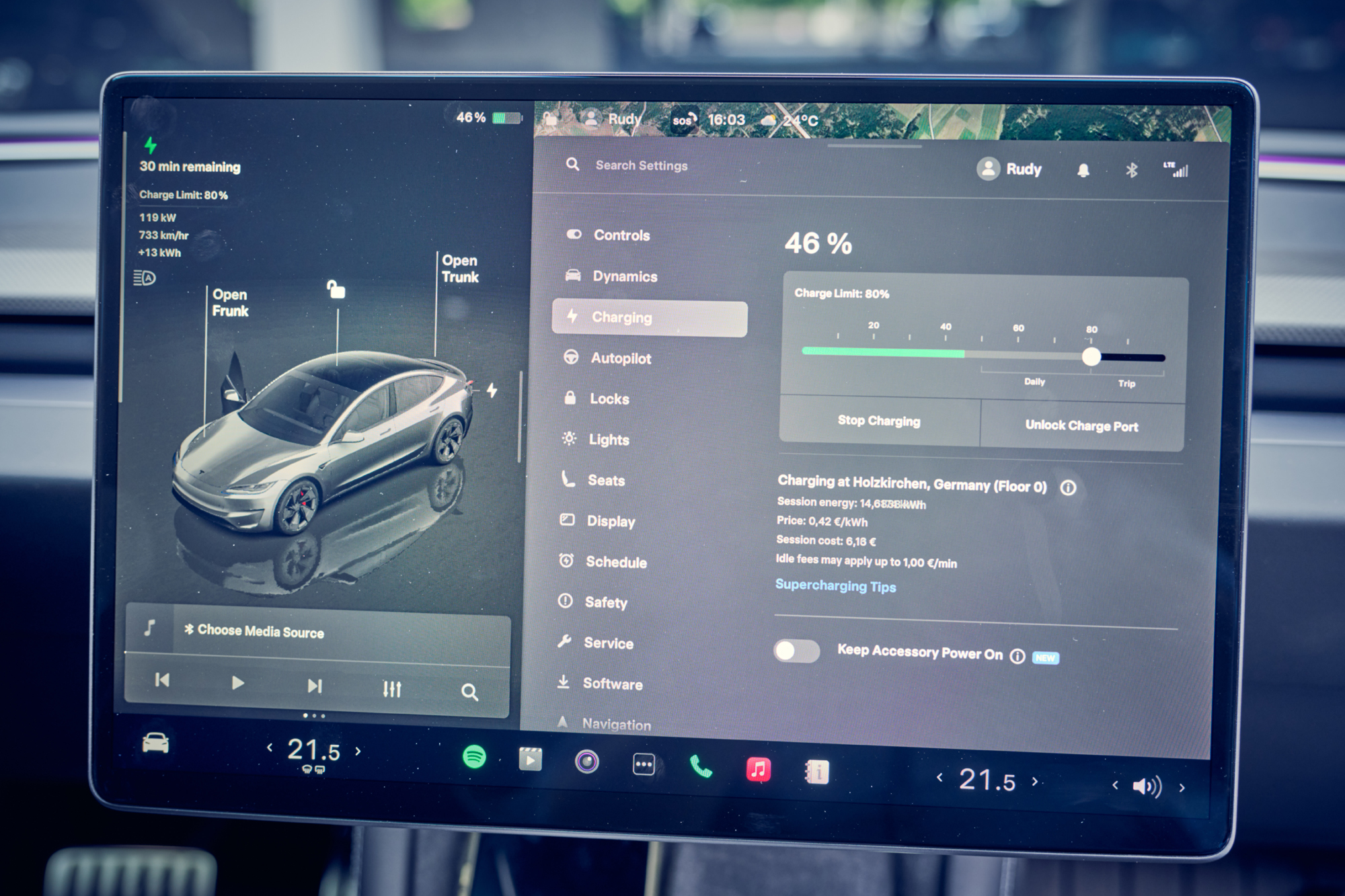
Sadly, the Tesla falls into exactly the same trap. Everything is fine and dandy as long as you trundle along, when hitting the left pedal produces the desired confidence-confirming deceleration. Drive harder, though, and the effort increases inversely proportional to the brake performance. Reeling in the CLA at autobahn speeds of up to 131mph again and again can be a bit of a nail biter, but dropping the anchors in the Model 3 at an indicated 165mph will rip every guardian angel in a five-mile radius out of his sleep.
Brake dive, a rarity these days, resurfaces in the Tesla, which pops its tail like a duck in the course of an emergency stop. Despite ABS and ESP, stability is momentarily on the edge, especially when there is more than a mild kink in the road. You never exceed 70mph? Point taken. But this phenomenon may return when pelting down a mountain pass or in the middle of an early morning blast.
Although the CLA’s cushy ride is impressive, the Tesla has improved hugely. Our Performance model was shod with substantial 275/50 R20 Pirelli P Zeros, and yet it didn’t feel overly firm compared to the Merc, which ran on tyres two sizes smaller, namely 255/40 R18 Goodyear Eagle F1s. With the dampers in Comfort, the Model 3 is sufficiently compliant even on crumpled back roads, over potholed B-roads and along autobahn sections gridded with transverse expansion joints.
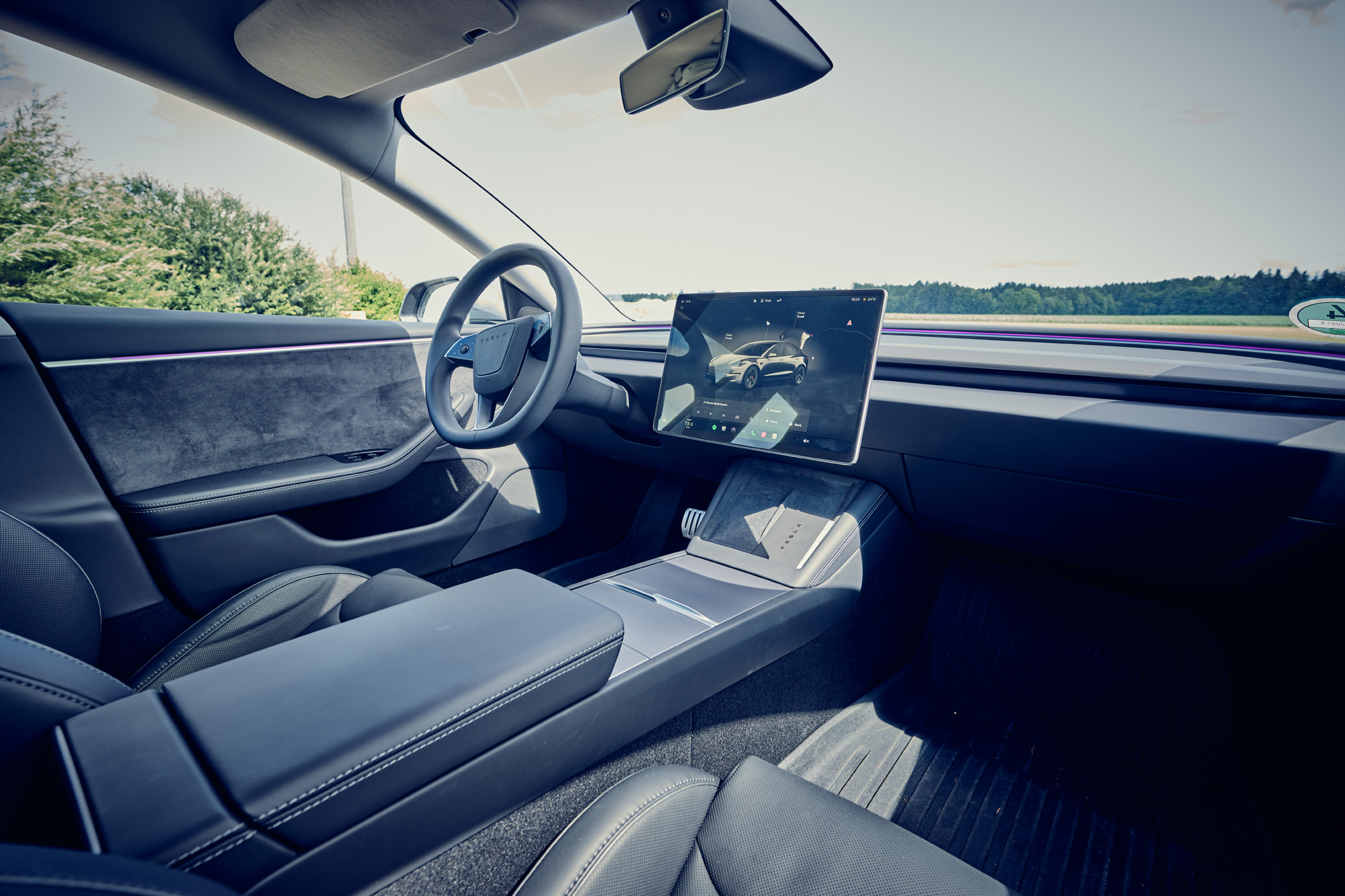
In the CLA you don’t have a choice, because Drive Select does not let you adjust the calibration of the shock absorbers. The wider tyre patch, the firmer suspension and the available Sport setting give the Tesla a clear dynamic advantage as soon as the driver pulls out all the stops. It is faster through the twisties, grips more firmly especially in the wet and handles in a more precise and entertaining manner.
The extra poise is backed up by slicker and quicker. Although the Tesla has a bigger turning circle –11.7 against 11.2 metres – it is clearly the more chuckable and involving car in corners. While the direction finder of the Model 3 is perfectly linear, the CLA steering relays a certain wooliness around the straight-ahead position. This momentary indifference reappears once you have reached the desired steering angle, when the helm bounces back ever so slightly from a virtual rubber stop. Mercedes is aware of this software-related issue, and allegedly a fix is under way. While they are at it, the engineers may also want to check out the fine tuning of the suspension. In combination with the seat’s own generous inner spring movements, it brings a slightly ‘floaty’ sensation over uneven surfaces tackled at speed. This trait is further emphasised by the fact that you sit much higher up in this car. But, as we said earlier, the ride of the Merc is on the whole very good.
Although our Tesla has the word Performance embossed in capital letters across its birth certificate, performance is a relative term in the real life of most EVs. The Model 3 musters a combined power output of 460bhp, which is way more than the CLA 350, but way less than the hot Hyundai Ioniq 5 N. More significant is the fact that both candidates produce oodles of instant torque, offering ample forward thrust in almost every situation. Although the top-notch Tesla can sprint to 62mph in 3.1 seconds versus the Merc’s 4.9, it doesn’t feel 1.8sec quicker. What matters more is the overtaking punch and modularity, a prime strength of the Model 3; this is where its big torque and weight advantages are most obvious.
When it comes to range and efficiency, the CLA has a tangible edge over the Model 3 Performance
When you’re in a hurry, the CLA should be in Sport or Individual mode. Comfort and Eco are calibrated for city driving, pottering along country lanes or when the battery is close to running on empty. The Model 3 lets you choose from three acceleration settings labelled Chill, Standard and Insane. Although the latter can be paired with the no-holds-barred Track mode, mixing this lethal cocktail would have voided the test car’s warranty, so we refrained. There is no full ESP kill switch like in the CLA, but thanks to the surplus twist action and the more pronounced rear-wheel bias, the Tesla is definitely keener to waltz than the Benz. (Hotter versions of the CLA are on the way, which should make more direct performance comparisons possible, although we’ll have to wait and see how they are priced.)
When it comes to range and efficiency, the CLA has a tangible edge over the Model 3 Performance, enabling shorter stops and longer driving stints. In three days of generally hard driving, the Tesla used significantly more electricity than the Mercedes; the official figures are, as ever, nigh-on impossible to match, but they do accurately indicate that the CLA has benefitted from Stuttgart’s best brains.
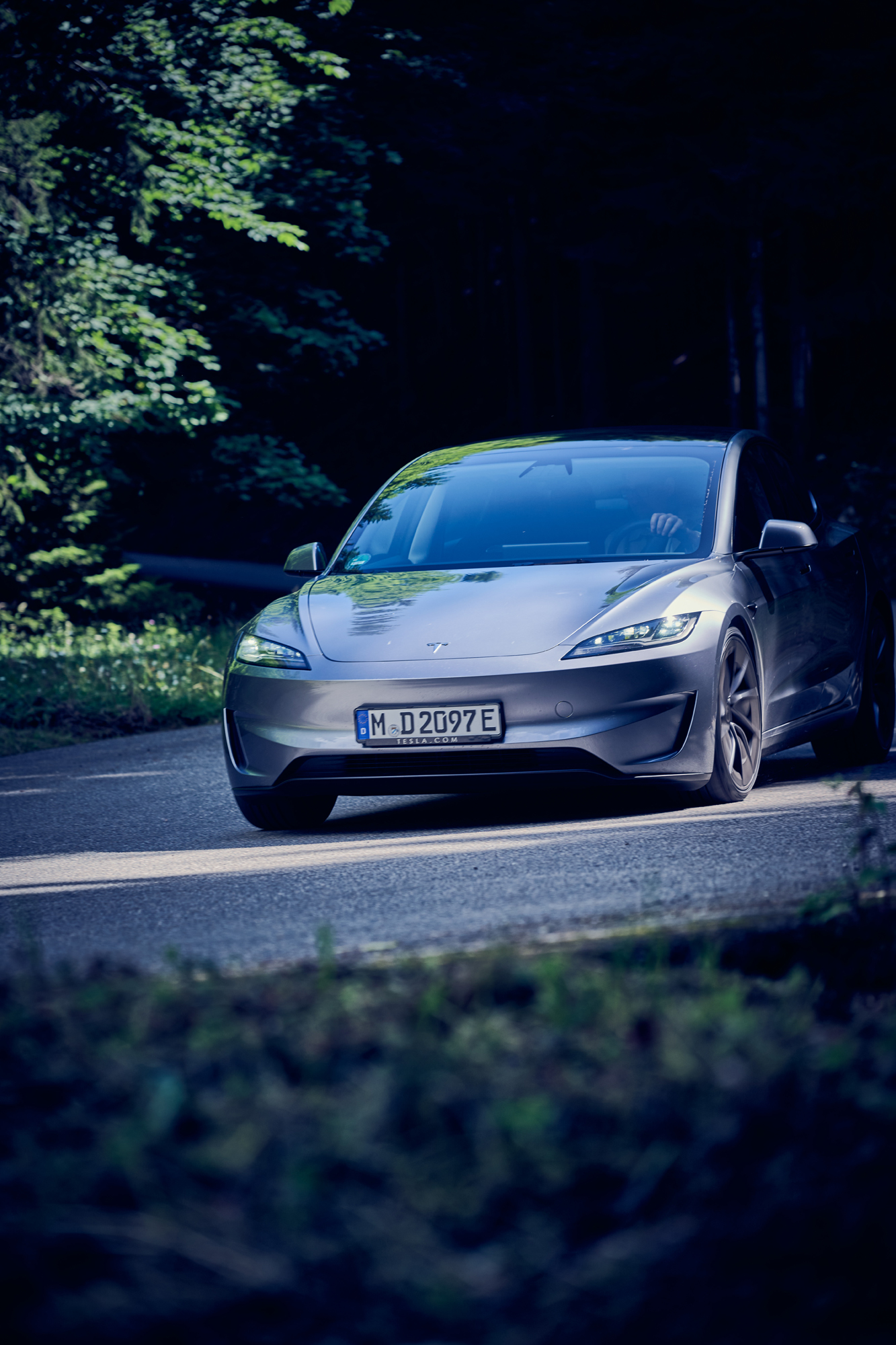
Supported by its 800-volt system and the bigger 85kWh battery pack, the Mercedes clearly beats the 75kWh Tesla in terms of on-paper range by 479 against 328 miles. For motorway warriors pressed for time, these 150 extra miles can be the decider. It’s worth noting, though, that the cheaper Long Range AWD model will cover 393 miles between plug-in breaks.
Although the latest V4-Cabinet Superchargers can pump out up to 500kW, ready for next-generation 800-volt and 1000-volt systems, the charging capacity of the Model 3 is still limited to a sub-par 250kW. Hooked up to the very same charging pole, the CLA350 will happily suck 350kW for the first few minutes before the graph begins its leisurely step-by-step descent. As a result, the Mercedes wins the critical 10-80 per cent charge time duel by 22 against 27 minutes.
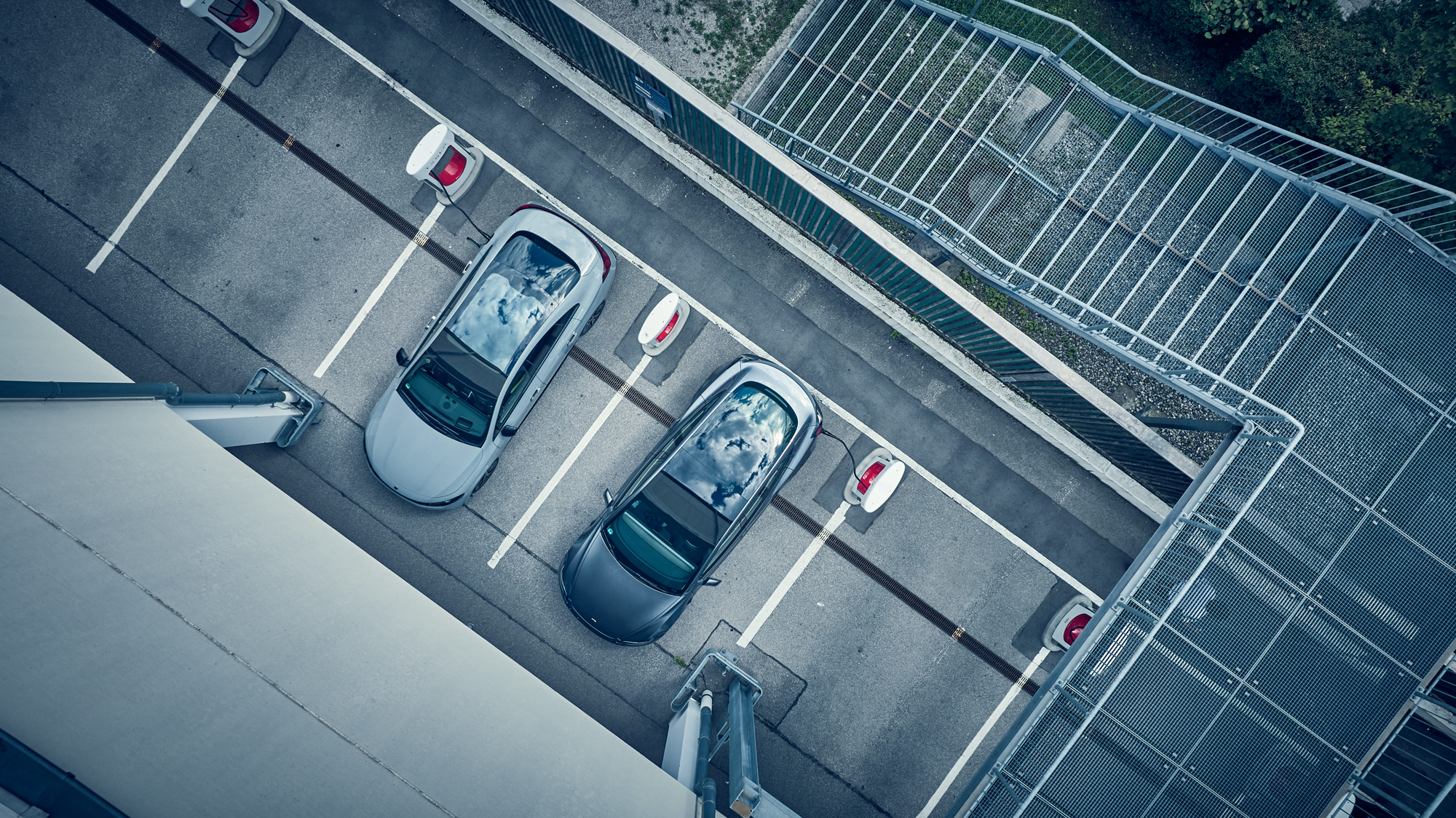
The Final Reckoning
SWINGS AND ROUNDABOUTS
This should be a home run for Mercedes. After all, the brand-new CLA doubles the voltage sweepstakes, dominates the range marathon and uses its more generous on-board energy more wisely. Spend big, and it will reward you with an S-Class-style full-width screen along with a bundle of ego-boosting mod cons. It is also quieter and pampers passengers with an eiderdown ride.
But the Tesla looks and feels classier inside, is more fun to drive on any kind of road, goes significantly better and is packaged to please, not to annoy. True, its once industry-leading battery and drivetrain no longer set the gold standard, the frustrating ergonomics can be dangerously distracting, and the brakes are simply not good enough for such a fast car.
At the end of the day, it narrowly beats the CLA, which is the better EV but more compromised, more expensive and dynamically less rewarding.
1st
Tesle Model 3 Performance
More fun to drive; much easier to fill with people and luggage. But flawed ergonomics and brakes; ageing electric componentry
2nd
Mercedes CLA 350 4Matic EQ
Range and consumption advantage; rides well; exuberant cockpit. But poor packaging; compromised dynamics; not enough knobs and buttons; lofty tariffs
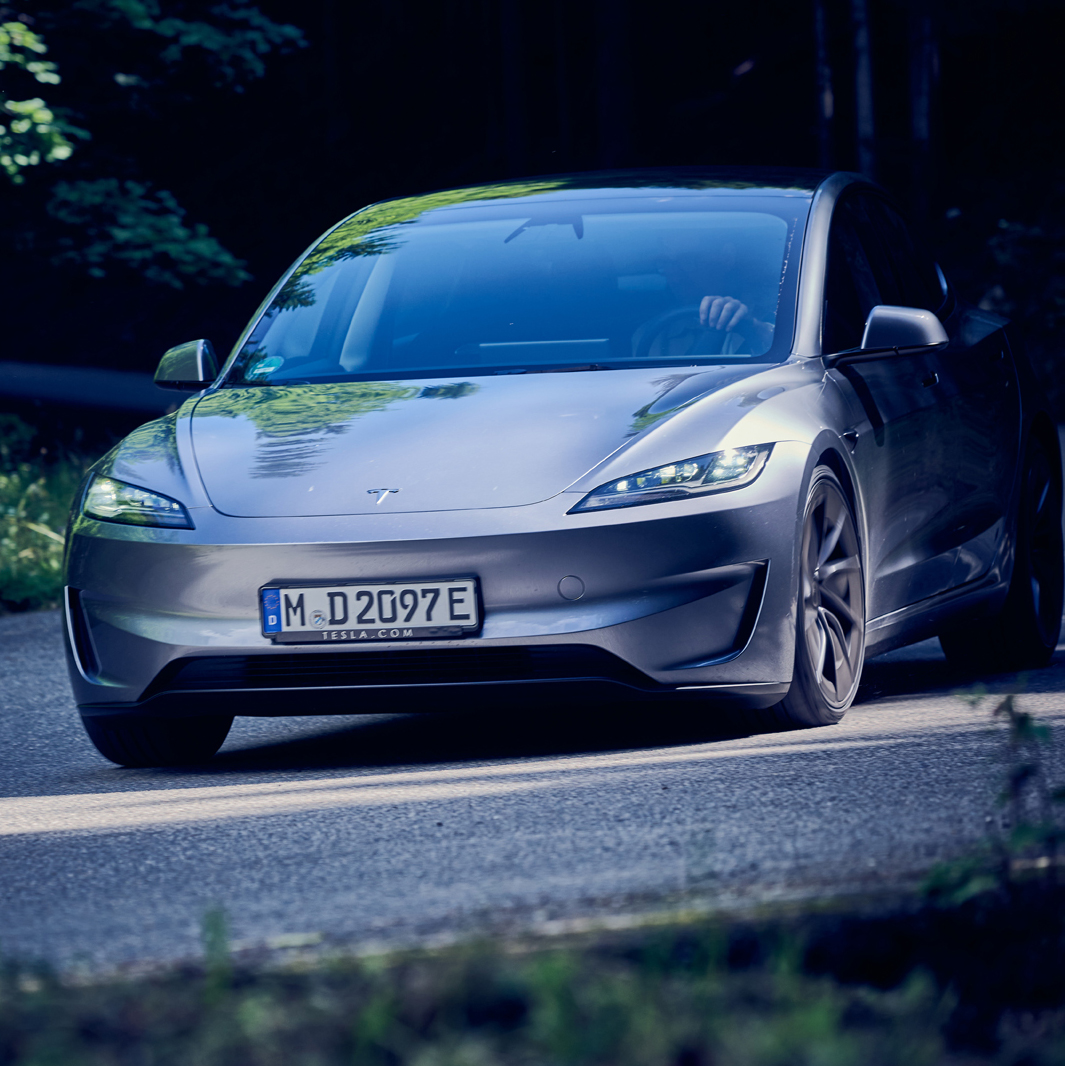
Facts & Figures | Tesla Model 3
What’s the line-up?
The entry ticket to Model 3 ownership is the base RWD version priced at £39,990. The 320bhp Long Range RWD version costs £44,990. Five grand more buys you the 489bhp Long Range AWD model tuned for long-distance efficiency. The 460bhp Model 3 Performance sets you back £59,990. It’s a big jump, but the top-of-the-line variant combines timewarp acceleration and phenomenal top speed with sharp handling and a much improved ride.
Data
Price £59,990
Powertrain 78kWh battery, two e-motors, all-wheel drive
Performance 460bhp, 533lb ft, 3.1sec 0-62mph, 163mph
Weight 1851kg
Efficiency 3.7 miles per kWh, range 328 miles, 0g/km CO2
Length/width/height 4720/1933/1431mm
Boot capacity 561 litres + 88-litre frunk

Facts & Figures | Mercedes CLA
What’s the line-up?
UK sales start with the £45,615 rear-wheel-drive CLA 250+ featuring a 268bhp motor and the same 85kWh energy pack as the 350 4Matic which joins the fray in January. Also expected next year are the entry-level CLA200 powered by a smaller 58kWh LFP battery as well as two AMG crackerjacks badged 35 and 45S which feature the same 85kWh NCM stack as the 350. The MMA-based AMG flagship is reportedly good for around 540bhp. In addition to the four-door coupe, the CLA will soon also be available as slightly roomier shooting brake.
Data
Price €56,000 (in Germany)
Powertrain 85kWh battery, two e-motors, two-speed transmission, all-wheel drive
Performance 349bhp, 380lb ft, 4.9sec 0-62mph, 131mph
Weight 2575kg
Efficiency 4.2-5.0 miles per kWh, range 418-479 miles, 0g/km CO2
Length/width/height 4723/1855/1468mm
Boot capacity 405 litres + 101-litre frunk

